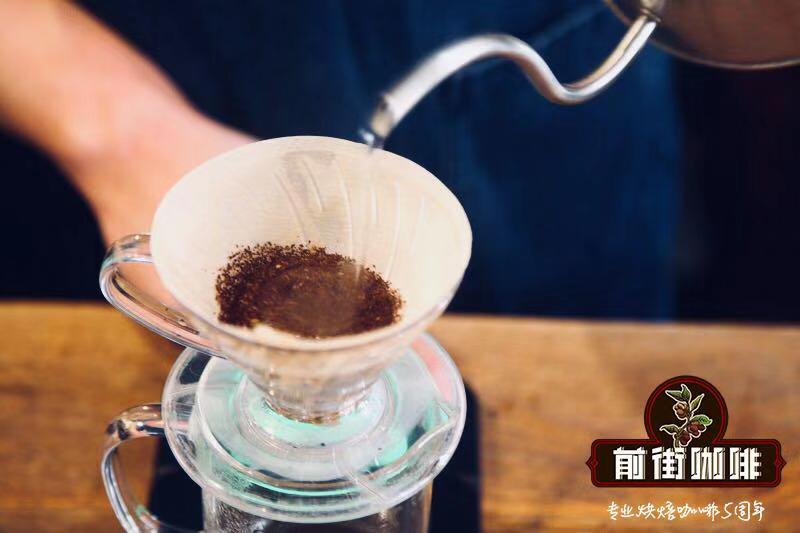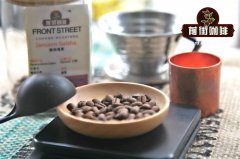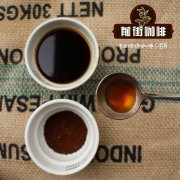How about anaerobic fermented coffee beans? introduction to the flavor characteristics of coffee by double anaerobic treatment

Professional coffee knowledge exchange more coffee bean information please follow the coffee workshop (Wechat official account cafe_style)
Introduction of double anaerobic Coffee in Columbia Paradise Manor in Front Street
As a creature that likes the new and hates the old, the pursuit of human taste experience has never stopped.
With the "quantity" of coffee demand rising in a straight line, bean seeds and traditional flavor of origin have begun to be unable to meet the "novelty-hunting" needs of consumers.
Starting from the "treatment method", changing the flavor of coffee has become a "secret weapon" sought after by many landowners and raw bean merchants. There are many ways to treat coffee beans, although beans determine the genes of coffee, but different treatments can give coffee beans a completely different flavor trend.
It means that after the fresh fruit is picked, it is put into a fermentation container for sealing and anaerobic fermentation, the sweetness and flavor of coffee cherries will more or less enter the interior of the coffee, and the fermentation of pulp and juice will also produce a new flavor. After fermentation to a certain extent, the coffee cherries are taken out in the sun, dried and shelled to get raw coffee beans.
Coffee treated in this way usually has a high sweetness and special flavor brought by pulp fermentation, but the treatment method is also more difficult, because many microorganisms have to be monitored in the fermentation process to prevent deterioration.
Characteristics of anaerobic fermentation treatment
The coffee fruit is placed in a stainless steel container (which will not absorb the previous coffee bean flavor) to make the flavor cleaner.
Fermentation in a closed environment, various factors are easier to control, each treatment of coffee beans tend to be more consistent, and the aromatic substances are not easy to volatilize.
Fermentation in an oxygen-free environment, the flavor is more round, easy to have cheese, cream aroma.
The coffee bean flavor using this method usually has a fuller mellow thickness and wine aroma.
Columbia Paradise Manor
Fruit Fenghua double anaerobic fermentation
Dry aromas of strawberry jam, blueberry, peach and yogurt
Sipped with multiple fruity aromas of blueberries and dark berries
With peach and mango milkshake flavor and sweet fruit
Succulent, plump and heavy body
END
Important Notice :
前街咖啡 FrontStreet Coffee has moved to new addredd:
FrontStreet Coffee Address: 315,Donghua East Road,GuangZhou
Tel:020 38364473
- Prev

What are anaerobic sun-cured coffee beans? introduction to Colombian anaerobic sun-cured coffee beans
Professional coffee knowledge exchange more coffee bean information please follow the coffee workshop (Wechat official account cafe_style) END
- Next

What are the characteristics of double anaerobic fermentation of coffee beans A brief introduction to the method of double fermentation of coffee beans
Professional coffee knowledge exchange more coffee bean information please follow the coffee workshop (Wechat official account cafe_style) front street Columbia Paradise Manor double anaerobic coffee introduction in recent years "anaerobic fermentation" coffee beans in the WBC finals stage, 2018 WBC top six contestants, five have chosen "anaerobic fermentation" coffee beans as their "weapon".
Related
- Beginners will see the "Coffee pull flower" guide!
- What is the difference between ice blog purified milk and ordinary milk coffee?
- Why is the Philippines the largest producer of crops in Liberia?
- For coffee extraction, should the fine powder be retained?
- How does extracted espresso fill pressed powder? How much strength does it take to press the powder?
- How to make jasmine cold extract coffee? Is the jasmine + latte good?
- Will this little toy really make the coffee taste better? How does Lily Drip affect coffee extraction?
- Will the action of slapping the filter cup also affect coffee extraction?
- What's the difference between powder-to-water ratio and powder-to-liquid ratio?
- What is the Ethiopian local species? What does it have to do with Heirloom native species?

